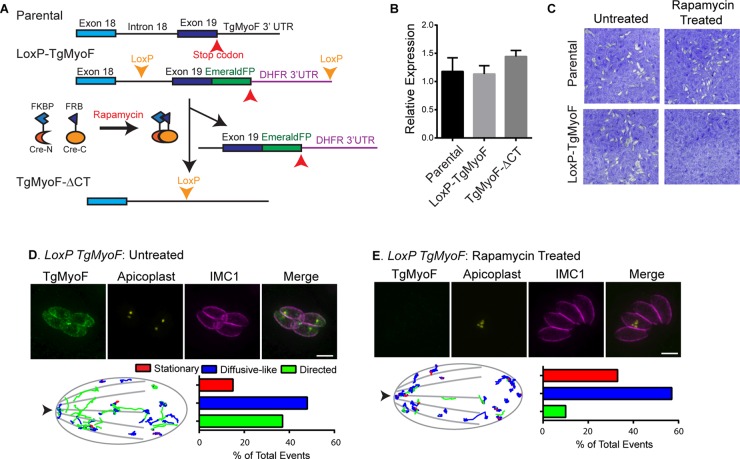FIGURE 5:
TgMyoF is required for directed dense granule motion. (A) Strategy for creating LoxP-TgMyoF and TgMyoF-ΔCT parasite lines. See the text for details. (B) Relative expression levels of full-length TgMyoF in parental and untreated LoxP-TgMyoF parasites compared with the expression level of TgMyoF-ΔCT in rapamycin-treated LoxP-TgMyoF parasites assessed using qPCR. (C) Growth of parental and LoxP-TgMyoF parasite lines as assessed by plaque assay with and without rapamycin treatment. (D and E) Top, fluorescence image of control and rapamycin-treated LoxP-TgMyoF parasites indicating aberrant apicoplast inheritance in TgMyoF-deficient parasites. Green: TgMyoF-emeraldFP; yellow: TgFNR-RFP highlighting the apicoplast; pink: anti-IMC1. (D and E) Bottom, left, parasite outline with dense granule trajectories from 10 parasites overlaid. Images were overlaid based on the x,y coordinates of the apical and basal ends of each parasite. Arrowhead indicates parasite’s apical end. Right, bar chart showing the percentage of granules exhibiting stationary (red), diffusive-like (blue), and directed (green) motion in each condition. See Supplemental Table S1 for trajectory specifics.

